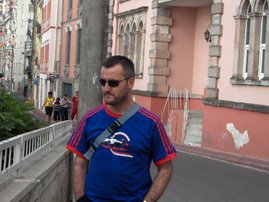Piri Reis

Piri Reis (d. 1465-70, Gelibolu - ö. 1554), Osmanlı denizcisi. Amerika'yı gösteren Dünya haritaları ve Kitab-ı Bahriye adlı denizcilik kitabıyla tanınmıştır.
Piri Reis eşsiz bir kartograf ve deniz bilimleri üstadı olmasının yanı sıra, Osmanlı deniz tarihinde izler bırakmış bir kaptandır. Türk denizciliği ekolünün piri sayılan Karamanlı Kemal Reis'in yeğenidir. Asıl adı Muhiddin olan Piri Reis, 1465 yılında Karaman'da doğmuştur. O dönemde Karamanoğulları Osmanlı devletine katılmış, Fatih Sultan Mehmet'in emriyle, Beyliğin ileri gelenleri İstanbul'a göç ettirilmiştir. Kemal Reis ve ailesi önce İstanbul'a, bir süre sonra Gelibolu'ya giderek orada yerleşmiştir.
Piri ve amcası Kemal Reis, uzun yıllar Akdeniz'de korsanlık yaptılar. 1486'da Granada’nın (Gırnata) Osmanlı Devleti'nden yardım istemesi üzerine 1487-1493 yılları arasında Piri ve amcası, gemilerle Granadalı (Gırnatalı) müslümanları İspanya'dan Kuzey Afrika'ya taşıdılar. 1499-1502 yıllarında Osmanlı Donanması'nın Venedik Donanması'na karşı sağlamaya çalıştığı deniz kontrolü mücadelesinde Osmanlı gemi komutanı idi. Piri Reis Akdeniz'de yaptığı seyirler sırasında gördüğü yerleri ve yaşadığı olayları, daha sonra Kitab-ı Bahriye adıyla dünya denizciliğinin de ilk kılavuz kitabı olma özelliğini taşıyacak olan kitabının taslağı olarak kaydetti.
Piri Reis, 1511'de amcasının ölümünden sonra, bir süre için açık denizlere açılmadı ve Gelibolu'ya yerleşti. Burada, önce 1513 tarihli ilk dünya haritasını çizdi. Atlas Okyanusu, İber Yarımadası, Afrika'nın batısı ile yeni dünya Amerika'nın doğu kıyılarını kapsayan üçte birlik parça, işte bu haritanın elde bulunan bölümüdür. Bu haritayı dünya ölçeğinde önemli kılan, Kristof Kolomb'un hala bulunamamış olan Amerika haritasındaki bilgileri içeriyor olmasıdır.
Piri Reis haritasını, Yavuz Sultan Selim'in Mısır seferi sırasında, 1517'de padişaha sundu.
Bazı tarihçilere göre, Osmanlı padişahı dünya haritasına bakmış ve 'Dünya ne kadar küçük...' demiştir. Sonra da, haritayı ikiye bölmüş ve 'biz doğu tarafını elimizde tutacağız..' demiştir.. Padişah, daha sonra 1929'da bulunacak olan diğer yarıyı atmıştır. Bazı kaynaklarca, günümüzde bulunamamış olan doğu yarısını, Hint Okyanusu'nun ve onun Baharat yolunun kontrolünü ele geçirmek için Padişahın yapacağı olası bir sefer için kullanmak istediği bile iddia edilmektedir...
Piri Reis seferden sonra, tuttuğu notlardan Bahriye için bir kitap yapmak amacıyla Gelibolu'ya döndü. Derlediği denizcilik notlarını bir Denizcilik Kitabı (Seyir Kılavuzu) olan Kitab-ı Bahriye'de bir araya getirdi..
Kanuni Sultan Süleyman'ın dönemi, büyük fetihler dönemiydi. Piri, 1523'deki Rodos seferi sırasında da Osmanlı Donanması'na katıldı. 1524'de Mısır seyrinde kılavuzluğunu yaptığı sadrazam Pergeli İbrahim Paşa'nın takdiri ve desteğini kazanınca, 1526'da gözden geçirdiği Kitab-ı Bahriye'sini Kanuni'ye sundu.
Piri Reis'in 1526'ya kadar olan yaşamı Kitab-ı Bahriye'den izlenebilir. Piri Reis, 1528'de de ikinci dünya haritasını çizdi. Bugün elimizde olan Kuzey Amerika haritası bu haritanın bir parçasıdır.
Sonraki yıllarda, güney sularında devlet için çalışan Piri Reis, bu dönemde, Hint Kaptanlığı yapmış, Umman Denizi, Kızıl Deniz ve Basra Körfezi'ndeki deniz görevlerinde yaşlandı.
Piri Reis'in Osmanlı donanmasında yaptığı son görev, acı olaylarla biten Mısır Kaptanlığı'dır. 1552'de çıktığı ikinci seferin son durağı Basra'da, tamire ve dinlenmeye muhtaç donanmayı bırakıp ganimet yüklü üç gemi ile Mısır'a döndüğü için, burada hapsedildi. Donanmayı Basra'da bırakması, Basra valisi Kubat Paşa'ya ganimetten istediği haracı vermemesi, Mısır Beylerbeyi Mehmet Paşa'nın politik hırsı yüzünden 1554'te hizmette kusurla suçlandı ve idam edildi. Ne var ki O, yarattığı evrensel boyuttaki eserleri olan, iki dünya haritası ve çağdaş denizciliğin ilk önemli yapıtlarından birisi sayılan Kitab-ı Bahriye ile günümüzde de halen yaşamaktadır...
Öldüğünde 80 yaşının üzerinde olan Piri Reis'in terekesine devletçe el konuldu.
Osmanlı Türklerinde gerçek anlamda haritacılık Piri Reis'le başlar. Bu acemice, emekleyen bir görüntünün aksine, mükemmel bir çıkıştır. Piri Reis'in Kitab-ı Bahriye adlı kitabı bir Türk'ün meydana getirdiği en önemli denizcilik eseri olarak dünyaca selamlanmıştır. Dünya haritası ve Kuzey Amerika haritasının çizimlerindeki isabet ve projeksiyon sistemindeki mükemmellik, tüm dünyada büyük hayranlık ve hayret uyandırmaktadır.
Başlıca yapıtları [değiştir]Kitab-ı Bahriye, (ö.s.), 1935, (Yeni harflerle, Denizcilik Kitabı, 2 kitap, Y. Senemoğlu (haz), ty.)
Piri Reis'in Haritası (İlk Dünya Haritası)
Piri Reis'in Haritası (İkinci Dünya Haritası)
Piri Reis (full name Hadji Muhiddin Piri Ibn Hadji Mehmed) (about 1465 – 1554 or 1555) was an Ottoman-Turkish admiral and cartographer born between 1465 and 1470 in Gallipoli on the Aegean coast of Turkey.
He is primarily known today for his maps and charts collected in his Kitab-ı Bahriye (Book of Navigation), a book which contains detailed information on navigation as well as extremely accurate charts describing the important ports and cities of the Mediterranean Sea. He gained fame as a cartographer when a small part of his first world map (prepared in 1513) was discovered in 1929 at Topkapı Palace in Istanbul. The most surprising aspect was the presence of the Americas on an Ottoman map, making it the first Turkish map ever drawn of the Americas -- although not the first ever, which was drawn by pilot and cartographer Juan de la Cosa in 1500 and is conserved in the naval museum (Museo Naval) in Madrid.
The most striking characteristic of the first world map (1513) of Piri Reis, however, is the level of accuracy in positioning the continents (particularly the relation between Africa and South America) which was unparalleled for its time. Even maps drawn decades later did not have such accurate positioning and proportions; a quality which can be observed in other maps of Piri Reis in his Kitab-ı Bahriye (Book of Navigation). The map of Piri Reis perfectly fits an azimuthal equidistant projection of the world centered in Cairo, and some believe it's also the oldest surviving map of Antarctica, despite being drawn more than 3 centuries before the official discovery of that continent.
In 1528 Piri Reis drew a second world map, of which a small fragment showing Greenland and North America from Labrador and Newfoundland in the north to Florida, Cuba and parts of Central America in the south still survives.
Biography
Piri began to serve in the Ottoman navy when he was young, in 1481, following his uncle Kemal Reis, a well-known seafarer of the time. He participated in many years of fighting against Spanish, Genoese and Venetian navies, including the First Battle of Lepanto (Battle of Zonchio) in 1499 and Second Battle of Lepanto (Battle of Modon) in 1500. When his uncle Kemal Reis died in 1511, Piri returned to Gallipoli and began to write his book Kitab-ı Bahriye (Book of Navigation). In 1513 he produced his first world map, based on some 20 older maps and charts which he had collected, including charts personally designed by Christopher Columbus which his uncle Kemal Reis obtained in 1501 after capturing seven Spanish ships off the coast of Valencia in Spain with several of Columbus' crewmen on board.
By 1516 he was again at sea, as a ship's captain in the Ottoman fleet. He took part in the 1516-17 campaign against Egypt, and in 1517 was able to show his world map to Sultan Selim I. In 1521 he finished his Kitab-ı Bahriye. In 1522 he participated in the siege of Rhodes against the Knights of St. John which ended with the island's surrender to the Ottomans on 25 December 1522 and the permanent departure of the Knights from Rhodes on 1 January 1523. In 1524 he captained the ship that took the Ottoman Grand Vizier Makbul Ibrahim Pasha to Egypt. Following the Vizier's advice, he edited his book and was able to present it to Sultan Suleiman the Magnificent in 1525. Three years later he presented his second world map to Suleiman.
By 1547, Piri had risen to the rank of Reis (admiral) and was in command of the Ottoman fleet in the Indian Ocean and admiral of the fleet in Egypt, headquartered at Suez. On 26 February 1548 he recaptured Aden from the Portuguese, followed in 1552 by the capture of Muscat, which Portugal had occupied since 1507, and the important island of Kish. Turning further east, Piri Reis captured the island of Hormuz in the Strait of Hormuz, at the entrance of the Persian Gulf. When the Portuguese turned their attention to the Persian Gulf, Piri Reis occupied the Qatar peninsula and the island of Bahrain to deprive the Portuguese of suitable bases on the Arabian coast.
He then returned to Egypt, an old man approaching the age of 90. When he refused to support the Ottoman governor of Basra, Kubad Pasha, in another campaign against the Portuguese in the northern Persian Gulf, Piri Reis was publicly beheaded in 1554 or 1555.
Several warships and submarines of the Turkish Navy have been named after Piri Reis.
Kitab-ı Bahriye (Book of Navigation): 1521 and 1525
Kitab-ı Bahriye is one of the most famous premodern books of navigation. The book contains detailed information on the major ports, bays, gulfs, capes, peninsulas, islands, straits and ideal shelters of the Mediterranean Sea, as well as techniques of navigation and navigation-related information on astronomy. The book also contains information about the local people of each country and city, and the curious aspects of their culture. Kitab-ı Bahriye was originally written between 1511 and 1521, but it was revised with additional information and better-crafted charts between 1524 and 1525 in order to be presented as a gift to Suleiman the Magnificent. Piri Reis drew these charts during his travels around the Mediterranean Sea with his uncle Kemal Reis. The revised edition of 1525 has a total of 434 pages and contains 290 maps.
Kitab-ı Bahriye has two main sections, with the first section dedicated to information about the types of storms, techniques of using a compass, portolan charts with detailed information on ports and coastlines, methods of finding direction using the stars, characteristics of the major oceans and the lands around them. Special emphasis is given to the discoveries in the New World by Christopher Columbus and those of Vasco da Gama and the other Portuguese seamen on their way to India and the rest of Asia.
The second section is entirely comprised of portolan charts and cruise guides. Each topic contains the map of an island or coastline. In the first book (1521), this section has a total of 132 portolan charts, while the second book (1525) has a total of 210 portolan charts. The second section starts with the description of the Dardanelles Strait and continues with the islands and coastlines of the Aegean Sea, Ionian Sea, Adriatic Sea, Tyrrhenian Sea, Ligurian Sea, the French Riviera, the Balearic Islands, the coasts of Spain, the Strait of Gibraltar, the Canary Islands, the coasts of North Africa, Egypt and the River Nile, the Levant and the coastline of Anatolia. This section also includes descriptions and drawings of the famous monuments and buildings in every city, as well as biographic information about Piri Reis who also explains the reasons why he preferred to collect these charts in a book instead of drawing a single map, which would not be able to contain so much information and detail.
Copies of the Kitab-ı Bahriye are found in many libraries and museums around the world.
Copies of the first edition (1521) are found in the Topkapı Palace, Nuruosmaniye Library and Süleymaniye Library in Istanbul, Library of the University of Bologna, National Library of Vienna, State Library of Dresden, National Library of Paris, British Museum in London, Bodleian Library in Oxford and the Walters Art Museum in Baltimore.
Copies of the second edition (1525) are found in the Topkapı Palace, Köprülüzade Fazıl Ahmed Paşa Library and Süleymaniye Library in Istanbul and the National Library of Paris.





Hiç yorum yok:
Yorum Gönder